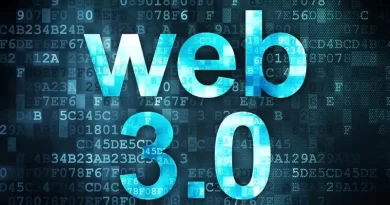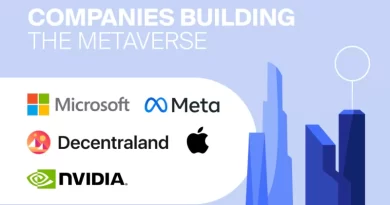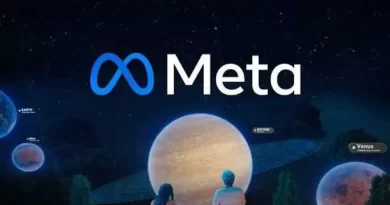Low-Code ‘Metaversing’ and What it Means for the Creator Economy
The metaverse may appear to be a better place to park one's money. Regardless of the reason, we now have an ideal environment for startup innovation.
McKinsey announced a little over a year ago that COVID-19 crammed ten years of expected e-commerce growth into just 90 days (a claim I think is open for debate). While the world was focused on e-commerce, another market segment was experiencing spectacular growth: Web 3.0.
It’s fair to say that the Web 3/non-fungible token (NFT) space has seen a decade’s worth of low-code innovation condensed into an 18-month period. It will take us much longer to fully comprehend the implications of everything.
Metaversing With Low-Code
Like many others, I assumed the metaverse was still a few years away. However, when Threekit announced the beta launch of Threekit for NFTs in mid-January, I realized that the metaverse would become mainstream much sooner. (In case you missed it, Threekit for NFTs enables users to create and mint NFTs directly from the Threekit platform.)
Threekit has a history of pivoting to meet the next e-commerce challenge. The company began by providing 360-degree product videos, which evolved into creating 3D visuals, and then into augmented reality (AR), which allowed customers to place 3D assets within their own spaces (e.g., place a 3D visual of a couch in a photo of their living room). It is noteworthy that the company has launched Threekit for NFT.
This news comes on the heels of Shopify’s announcement that users will soon be able to mint and sell NFTs on its platform, effectively allowing any of its 2.6 million stores to enter the metaverse economy. These developments are significant because they indicate a traditional e-commerce business’s readiness for the next wave of disruptive technology. To put it another way, traditional e-commerce SaaS companies are signaling that they’re all in on the metaverse. Are they just guessing?
Responding to customer demand? Or are they, in Pygmalion fashion, wishing the metaverse to exist? It’s difficult to say with certainty, but as the saying goes, if you build it, they will come.
The Creator Economy and Low-Coders
Low-code solutions, like Web 2.0, lower the barriers to entry into Web 3.0, allowing any brand to enter the game quickly and affordably. Once that occurs, the creator economy will be flooded with work for years to come. For example, starting an NFT requires creating a large amount of unique artwork (as it happens, Upwork now has an entire section for artists who specialize in NFT art). The NFT owner will then require an ERC 721 smart contract, which will be published.
Previously, brands had to hire a developer to write that code and deploy it to the blockchain, but that’s changing thanks to companies like NiftyKit, which should exist. NiftyKit is a no-code solution for NFT smart contracts that solves a variety of problems. I believe it has the potential to become the Shopify of NFTs. What’s mind-boggling is that NiftyKit emerged in 15 months, whereas the Magentos and Shopifys of the world took 15 years to launch their cloud-enabled products.
With a smart contract in place, the next step is to create a website to host the mining experience, which is relatively simple now that website creation is largely a low-code process. Many web developers will be able to find work.
Finally, brands must manage their files and publish them to the IPFS (Interplanetary File System), a distributed file-sharing tool. Consider it a cryptocurrency version of Dropbox. Because a brand can easily have 10,000 separate files to manage, this part of launching an NFT is ripe for low-code innovation. However, while there has been a lot of no- and low-code innovation, there is still a lot of work to be done before Web 3.0 becomes as simple as launching a Shopify site.
Who Will Be the Near-Future Low-Code Enablers?
Smart contracts interact in various ways, necessitating NFT owners to write, test, and deploy code to the blockchain. There is currently no solution for automating smart contract codes, but I believe one will emerge soon.
Zapier, a company that automates interactions and interoperability between web apps, may have a solution. Web 3.0 use cases appear to be a natural next step for the company. If not Zapier, some other event-based no-code automation will step up to the plate.
In addition, the market requires an iOS Passbooks-style app with a digital loyalty card based on the presence of an NFT in the wallet. Companies will be able to restrict a portion of their shopping experience to holders of their NFTs using this functionality. In theory, Zapier can help with this because it can interact with Ethereum.
Another thing that does not yet exist should be digital-to-physical connections. The market is seeing an increase in demand for NFT activity that has a direct benefit to the physical world. To get there, traditional e-commerce companies will need a single sign-on solution that connects the two worlds. We also require a no-code, single-sign-on solution that can identify and check out shoppers on e-commerce sites using a qualifying NFT. Perhaps a company like Authy will step forward.
The Drivers
To date, all of the Web 3/NFT innovation has occurred in an astonishingly short period of time. We’re only 14 months into the current NFT innovation cycle, which begs the question: What’s driving it? It could be due to customer demand (there has been no shortage of big CPG and luxury brands launching NFTs).
It could also be the result of an excess of liquidity. In 2021 alone, VCs will invest $30 billion in crypto-backed startups. Wow. With inflation on the rise and investors dissatisfied with T-Notes and money markets, the metaverse may appear to be a better place to park one’s money. Regardless of the reason, we now have an ideal environment for startup innovation.




